Aquarium enthusiasts are always keen to keep their tanks healthy and full of life, but all this can be easily thrown off balance by this stiff, pointy staghorn algae. Its threads are dark, branch-like and look like deer antlers; staghorn algae prefer plant leaves, decorations, and surfaces of aquariums.
Content Table
It is already unpleasing to the eye but can worsen and become a problem, overshadowing plant growth and perhaps be a threat to the tank inhabitants in the area if not addressed. To aquatic hobbyists, staghorn algae are real; it is crucial to know why they cause harm to aquarium health and the best way to eradicate the problem.
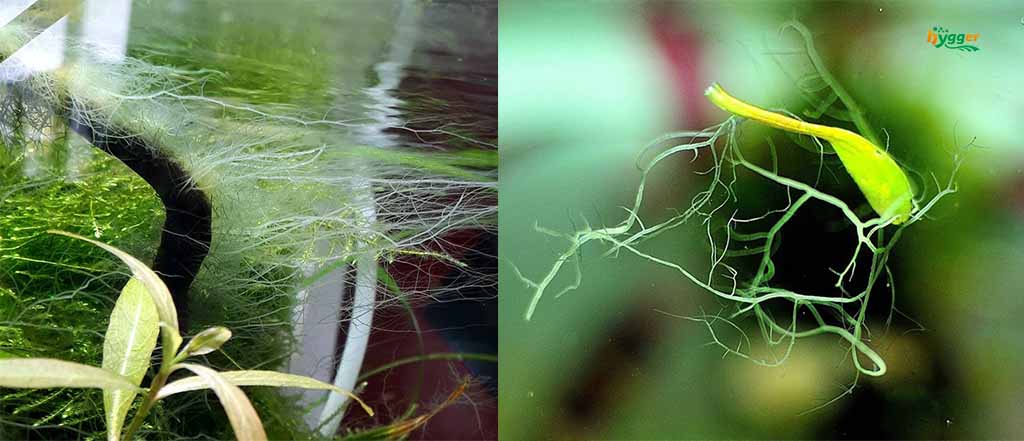
staghorn algae
Staghorn Algae Causes
- It is known to appear when there are some irregularities in the tank.
- Excessive lighting, variation in the nutrients supplied, impure water, and high concentrations of ammonia or nitrate encourage the growth of algae.
- Restricted water circulation and high concentrations of carbon dioxide (CO2) may also play a major role and lead to conditions favorable for water fern-staghorn algae.
- In general, algae spores are present in most aquariums, and any fluctuation in the balance leads to their rather fast reproduction, affecting plants and developing on their leaves, as well as on hard surfaces of fish tank decorations.
The Impacts of Staghorn Algae on Fish Tanks
What is Staghorn algae?
Staghorn algae, which is also known as ‘staghorn fungus’ is not a fungus but a variety of algae that grows on plant leaves, wood, and gravel in home aquariums. Its stalk is very black and rigid, which isn’t very flattering to the overall look of an aquarium. However, the impacts do not stop at the physical or the visual level.
The Impact of Staghorn Algae on Fish Tanks
The algae layer on plants robs them of light, which is necessary for their healthy growth, and gradually depletes them. It results in low levels of dissolved oxygen concentration within the tank and the creation of unsuitable surroundings for any fish and other dwellers in the tank. As they reproduce, algae compete with the plants for nutrients, thus stressing plants and possibly affecting the balance of the tank.
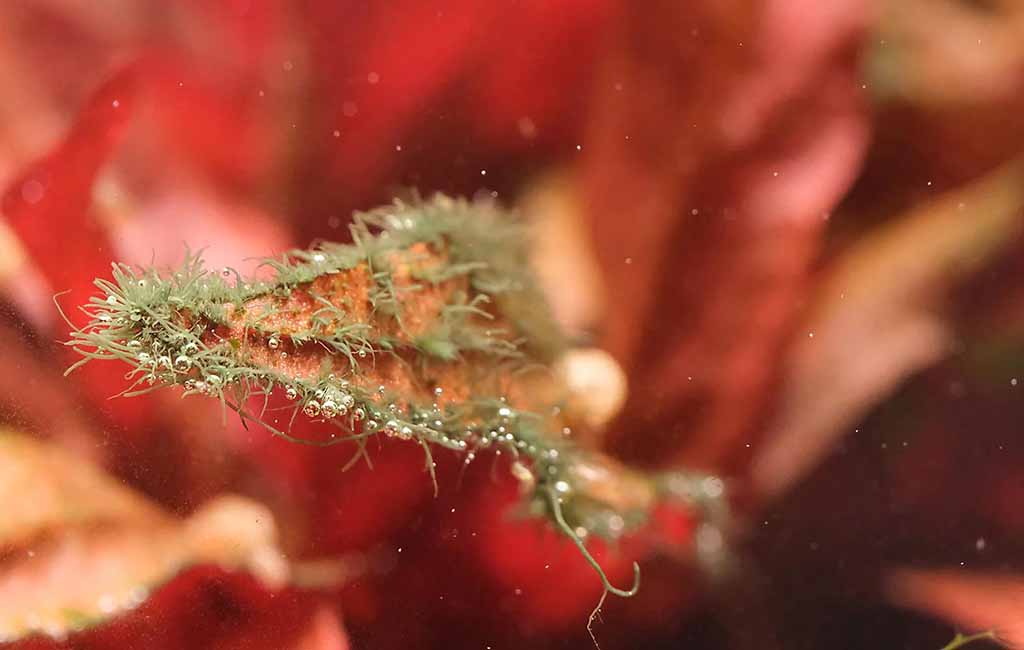
What fish eats staghorn algae
How to Control Staghorn Algae in Tanks
Preventing and controlling staghorn algae involves addressing its root causes. Here are a few strategies to consider:
- Light Control: One way of retaining plants’ beauty is to manage the amount of aquarium light that comes in contact with the algae, as less light makes the algae grow slowly. To avoid constant staghorn algae growth, it is advised to lessen the amount of time and the intensity of light given to the aquarium daily.
- Optimize CO2 Levels: This is because high CO2 levels may cause algae to grow. It is normally important to ensure that the CO2 levels are regulated to extend the balance in planted encourages. The levels can be well managed through the procedure of water change and observation of the CO2 injection.
- Improve Water Circulation: Stagnant water promotes staghorn algae growth, so introducing water circulation with a filter or pump reduces the link.
- Maintain Balanced Nutrients: It is advisable to occasionally check the water parameters to detect whether there is any leaning toward the side of the nutrients. It’s recommended to estimate and provide adequate doses of phosphates, nitrates, and other inputs for plant stimuli, but no algae
- Routine Tank Cleaning: It is thus possible to avoid algae by cleaning the tank frequently, removing the excessive debris, and cutting the plants. Cleaning the substrate by vacuuming and cleaning the surface will also help prevent the erratic spread of spores.
What Fish Eat Staghorn Algae
Staghorn algae can be beaten back by some fish species that feed on it. Another method that can be used as a form of Ipswich control is the introduction of algae-eating fish into the water.
Siamese Algae Eaters: One of the Siamese algae eaters used in fighting different types of algae and the best type is staghorn algae.
Amano Shrimp: Amano shrimp are efficient algae eaters and can keep staghorn algae in check, including for aquariums of moderate size.
Nerite Snails: These nerite snails feed mainly on algae and are real algae eaters; they can reduce staghorn algae in a tank once introduced.
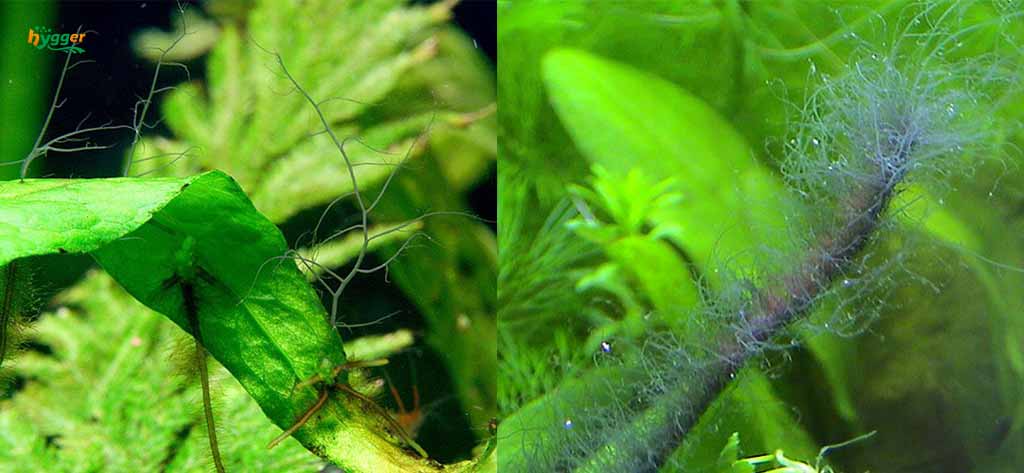
Get rid of staghorn algae
How to Get Rid of Staghorn Algae
If you’re dealing with a severe staghorn algae outbreak, manual removal might be necessary to take back control. Here’s how:
- Manual Removal: Using a soft brush or sponge, gently scrub algae off plant leaves, decorations, and tank surfaces. Take care not to damage plants.
- Hydrogen Peroxide Treatment: Hydrogen peroxide can be an effective way to target staghorn algae. Using a syringe, carefully apply a 3% hydrogen peroxide solution directly onto the algae. This method should be used sparingly and with caution, as too much can affect tank inhabitants.
- Spot Dosing with Liquid Carbon: Products with liquid carbon can be spot-treated on the algae to weaken and kill them. Like hydrogen peroxide, liquid carbon should be applied directly to the algae via a dosing pump and monitored closely.
- Increase Cleaning Frequency: During the removal phase, increase water changes and keep the tank clean to ensure minimal algae regrowth.
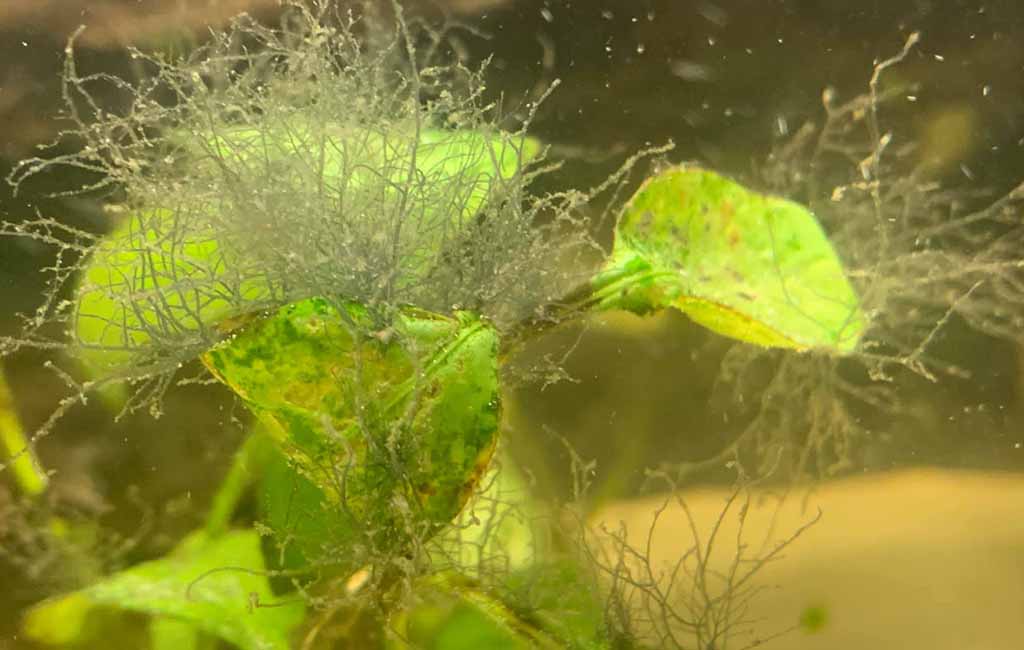
Spiky staghorn algae
The Last Word
Staghorn algae are quite hardy and can stick around aquariums for quite some time, all the while, if the pH imbalance is not fixed. This means that with constant cleaning, moderate lighting, and a couple of algae-eating fish, aquarists can easily prevent the growth of staghorn algae and even get rid of it altogether. By doing that, you will get to know the representative causes and effects and apply specific treatment procedures that will allow you to preserve the tank, its outlook, and algae-free for as long as possible.
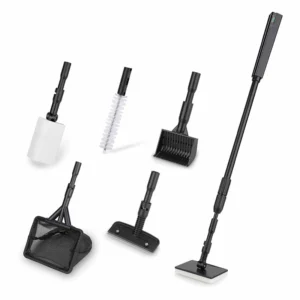
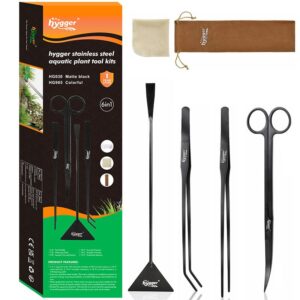
Leave a comment